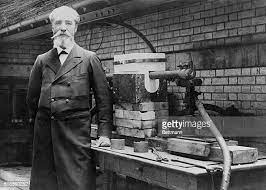Today's KNOWLEDGE Share
Henri Moissan-The Nobel Prize in 1906
Several generations of chemists had tried in vain to isolate #fluorine, notably by #electrolyzing phosphorus and arsenic fluorides, but Moissan was determined to find a way. His genius lay in the idea of turning the bath into a conductor by adding a molten potassium fluoride salt, KHF2. (Pure hydrogen fluoride, HF, could not suffice as its capacity as an electric conductor was too weak.) Moissan devised a platinum electrolyzer and lowered the reaction temperature of the electrolytic solution of HF + KHF2 to limit corrosion. The platinum electrolyzer was U-shaped and stopped with fluorite (CaF2) stoppers.The cathode and the anode were made of irridated platinum to provide better resistance to the fluorine. The traces of hydrogen fluoride were condensed at the end of the apparatus in a low-temperature trap and also by sodium fluoride. On June 28, 1886, a gaseous product was identified at the anode of the electrolyzer: Fluorine (F2) had been successfully isolated, thus resolving one of the most difficult challenges in the realm of #inorganicchemistry. The yellow-green gas obtained was highly toxic and proved to be a powerful oxidizing agent, causing organic materials to burst into flames on entering into contact with it and combining directly, and often violently, with almost all other elements.
Among his contributions to science, there is also his arc #furnace capable of reaching temperatures of 4,100 ° C, allowing the reduction of certain metals such as uranium, chromium, tungsten, vanadium, manganese, titanium and molybdenum.
Source:wiley.com
Follow: http://polymerguru.blogspot.com






No comments:
Post a Comment